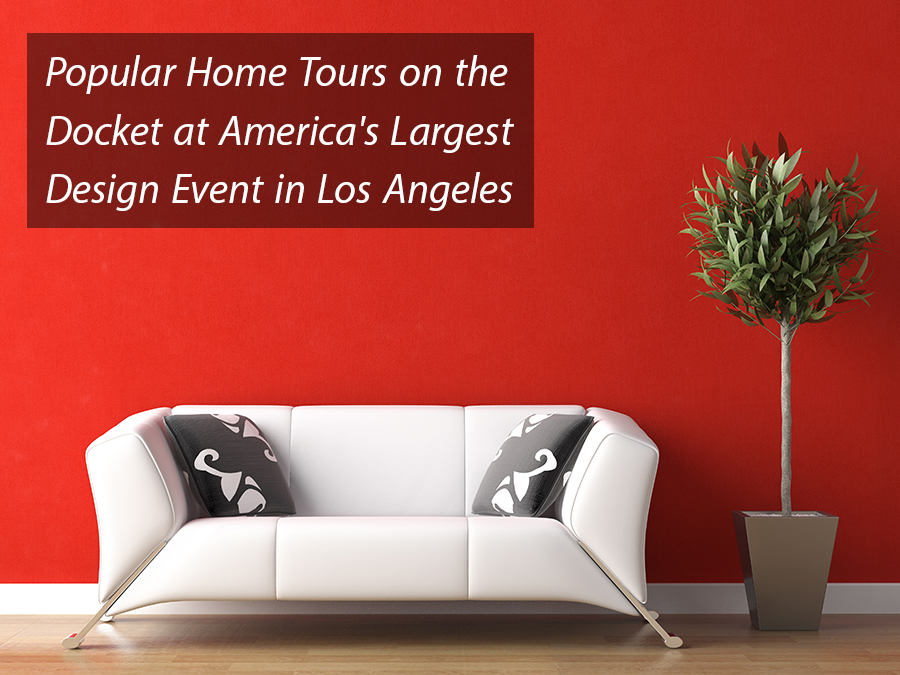Author: Igor Nastaskin
Realtor.com Finds Homes Near Concert Venues Sell for a Premium
If you thought that late-night noise, traffic and fans surrounding outdoor concert venues was a turn off to homebuyers, you might have thought wrong. Turns out homeowners not only want to be near restaurants and shopping, but they also are attracted by homes within walking distance of outdoor music venues. In fact, a new analysis by Realtor.com has identified 20 such spots where homes within walking distance actually see at least a 9 percent premium in price compared with the surrounding area. Realtor.com’s chief economic, Jonathan Smoke, compared realtor.com’s residential sales and deed database with outdoor venue information provided by the independent ticket marketer Vivid Seats. His team examined home prices within a mile of 68 outdoor concert venues, comparing them with home prices in the surrounding ZIP code. Topping the list at No. 1 is Capital City Amphitheater in Tallahassee, Fla., where the median-priced homes within walking distance are 78 percent more expensive (at $177,500) than the surrounding ZIP code. At No. 2 was OKC Amphitheatre in Oklahoma City, where homes with a mile of the venue were 68 percent more expensive (at $49,500) than the surrounding ZIP code. And, good news for Angelenos: Homes within a mile of the historic Greek Theatre, the third-place venue, were worth 63 percent more than their neighbors farther from the venue, with a median price of $2.1 million. “Live events like concerts add so much to a community,” said Vivid Seats spokesperson Julia Litz. “The added foot traffic aids local business, while the culture and vibrancy of the event add excitement. Plus, for residents of the neighborhood there’s the added benefit of simply walking to and from the venue.” Here, the areas where walkability to a music venue means higher home prices: Ranking Venue Home Prices Within 1 Mile of Venue Home Prices in ZIP Code Venue vs. ZIP Code 1 Capital City Amphitheater (Tallahassee, Fla.) $177,500 $100,000 78% 2 OKC Zoo Amphitheatre (Oklahoma City) $49,500 $29,500 68% 3 Greek Theatre – Los Angeles (Los Angeles) $2,100,000 $1,285,000 63% 4 Investor Amphitheatre (Gainesville, Ga.) $199,450 $125,000 60% 5 Cincinnati Playhouse In The Park (Cincinnati, Ohio) $319,750 $219,750 46% 6 Oregon Zoo Amphitheatre (Portland, Ore.) $700,000 $494,950 41% 7 The Levitt Shell (Memphis, Tenn.) $210,000 $150,500 40% 8 Surly Brewing Festival Field (Minneapolis) $316,500 $232,250 36% 9 Weesner Family Amphitheater at the Minnesota Zoo (Apple Valley, Minn.) $249,900 $193,500 29% 10 Ravinia (Highland Park, Ill.) $605,000 $487,500 24% 11 Tallahassee Pavilion (Tallahassee, Fla.) $120,000 $100,000 20% 12 Sawyer Point Park (Cincinnati) $260,500 $219,750 19% 13 Madera Fairgrounds (Madera, Calif.) $237,000 $205,000 16% 14 Red Hat Amphitheater (Raleigh, N.C.) $300,500 $260,000 16% 15 Clarke County Fairgrounds (Berryville, Va.) $315,000 $273,950 15% 16 Wolf Trap Farm (Vienna, Va.) $882,500 $780,000 13% 17 Ascend Amphitheater (Nashville) $307,000 $275,000 12% 18 Ravina on the Lakes (Peoria, Ill.) $177,000 $160,950 10% 19 Concord Pavilion (Concord, Calif.) $575,000 $525,000 10% 20 Bayfront Park (Miami, Fla.) $392,500 $358,500 9%
Mortgage Rates Touch New 2016 Lows
Freddie Mac released the results of its Primary Mortgage Market Survey on June 30, showing average fixed mortgage rates dropping to new 2016 lows in the wake of the Brexit vote. At 3.48 percent, the 30-year fixed-rate mortgage is only 17 basis points from its November 2012 all-time record low of 3.31 percent. “In the wake of the Brexit vote, the yield on the 10-year U.S. Treasury bond plummeted 24 basis points,” says Sean Becketti, Freddie Mac’s chief economist. “The 30-year mortgage rate declined as well, but not by as much, falling 8 basis points to 3.48 percent.” The latest survey rate is the lowest since May 2013 and only 17 basis points above the all-time low recorded in November 2012, which means the extremely low mortgage rate should support solid home sales and refinancing volume this summer, Becketti says. According to Freddie Mac: The 30-year fixed-rate mortgage averaged 3.48 percent—with an average 0.5 point for the week ending June 30—down from the previous week when it averaged 3.56 percent. A year ago at the same time, the 30-year fixed-rate mortgage averaged 4.08 percent. The 15-year fixed-rate mortgage averaged 2.78 percent—with an average 0.4 point—down from the previous week when it averaged 2.83 percent. A year ago at the same time, the 15-year FRM averaged 3.24 percent. The five-year Treasure-indexed hybrid adjustable-rate mortgage averaged 2.70 percent—with an average 0.5 point—down from the previous week when it averaged 2.74 percent. A year ago at the same time, the 5-year adjustable-rate mortgage averaged 2.99. Note: Average commitment rates should be reported, along with average fees and points, to reflect the total upfront cost of obtaining a mortgage, Freddie Mac states. Borrowers may still pay closing costs that aren’t included in the survey.
What Dads Want in Their Homes
In honor of the recent Father’s Day celebration, MarketWatch decided to take a look at what dads really want in a home. While moms are seeking mudrooms and open floor plans, it seems more and more dads are looking for a space of their own. Here are some of the rooms they’re looking for: • Barring the cigar lounge, at the top of the list for dads is the original man cave, namely the garage, says Florida Realtor Bruce Elliott. Dads have also asked for cabinets on porches big enough to install a small fridge, a shaded platform for a grill or storage sheds for pool games and floating toys, he says. Dads also spend time really evaluating the potential a garage has and “will it fit their jet skis or other toys, a workbench or, of course, that mountain of kids’ stuff,” he says. • A father of three, Illinois architect Frederick Wilson created a separate space in his house for his Lionel trains and railroad memorabilia. He’s also been asked to create special spaces for dads as well, including one for a client who wanted to mount his trophies from big game hunting trips; another for a client who wanted to mount his guitars and have a place to jam; and yet another who wanted the wall of his study knocked out so he could stare at his classic cars in the garage. • Illinois developer Jerry James’ town house designs outside Chicago feature a square, private outdoor deck on the main level that’s easily accessible from the kitchen and family room and is accessed through a den. “The connected den can be used as a kids’ playroom where dad can ke7ep an eye on them while relaxing and reading a book on the deck,” James says. “Or, if the den is used as a home office, the deck makes a nice change of scenery if dad is working from home for the day and wants to work outside on his laptop.” • A little more down-to-earth dad amenity is the outdoor kitchen. “It’s a popular upgrade for dads who not only want a fully equipped, dedicated space where they can show off their skills as family grill master, but also have a great area for outdoor entertaining,” says Karen Schmid, sales manager at Red Seal Homes in Illinois.
Popular Home Tours on the Docket at America’s Largest Design Event in Los Angeles
Design enthusiasts will have the chance to explore numerous L.A. area homes that have been hand selected by Dwell magazine for their diversity of livable, innovative modern architecture and design during the 11th annual Dwell on Design exhibition and conference, set for June 17-26 at the Los Angeles Convention Center. Here’s a look at what you can expect to see on these exclusive tours, which take place from the hills to the beach June 19, 25 and 26, from 10 a.m.-4 p.m.: Mar Vista/Culver City (June 19)—includes the Coolidge Residence, a former one-story home renovated by Thane Roberts to accommodate a larger family, complete with two stories, gardens and a pool; Grand View Residence, sporting the extensive remodel and addition of a bungalow by Design/Build Studio Daryl Olesinski, O+L Building Projects LLC; Keeshen Drive, which mergers indoor and outdoor living; Rubens House, a new modern property designed by Thane Roberts and built by T.C. Green Homes; and the Venezia Residence, designed for a video game developer with an outdoor screening room and a storage room designed specifically for surfboards. East Side/Hills (June 25)—includes the Black House, originally built in 1978 and transformed by builder Scott Harris and designer Jennie Garth (complete with a custom floating fireplace, a hillside infinity pool with an underwater speaker system and a putting green); Beech Knoll House, a recently remodeled sleek and modern abode featuring a fully integrated automation system that spans from preferred shower settings to mood-specific lighting and music; Temple Hill House, an original Buff, Straub and Hensman home reengineered by architect Don Mathias Dimster to create a luxurious oasis in the Hollywood Hills with a roof deck boasting unobstructed views; The Samuel-Novarro House, designed by famed architect Frank Lloyd Wright Jr. in 1928, which was acquired by actress Diane Keaton in the 1980s and remodeled by architect Josh Schweitzer; and Trousdale Residence, originally designed by master architect Rex Lotery in 1960 and updated with new finishes, an open layout, and large kitchen and entertaining space. Santa Monica/Venice (June 26)—includes the Piccus Residence, which highlights the homeowner’s personal art collection (including traditional paintings and sculpture); Cooper Residence, which showcases simplicity in structure and material while implementing environmentally conscious design; Adelaide Place, a prefabricated LivingHome by architect Ray Kappe that has been decked out by designer Denise Kuriger to suit the tastes of the homeowner, an avid gourmand and modern art collector; Maloney Residence, featuring Western Red Cedar throughout and high ceilings that connect exterior spaces from the front to back; and Bay Street, a 1917 beach bungalow that has been redone by designer Delphine Lafont to create additional light and space. In addition to the Home Tours, design lovers also will be able to listen to the architects, builders and designers discuss their challenges, inspirations and successes in designing and building each of the homes featured at Meet the Architects Nights, scheduled for June 17 and 23 from 7-9 p.m. The exhibition and conference also features world-class speakers, product demonstrations, seminars and more. For more information on this year’s event, or to purchase home tour tickets for $100-$110, visit la.dwellondesign.com.
Mortgage Rates: Rising Along with Fed Optimism
Mortgage rates rose for the second week, ticking up to 3.64 percent as Fed VIPs hinted they might raise short-term borrowing costs sooner rather than later. A year ago, 30-year, fixed-rate mortgages averaged 3.87 percent, according to Freddie Mac. Rates on long-term loans have held below 4 percent for 16 of the past 17 months, a boon to both buyers and sellers. In April, low rates combined with a steady job market helped lift home purchase contracts, which rose for the third month to a 10-year high. The surge was particularly strong in the West, where pending sales jumped more than 11 percent, the biggest advance since the National Association of Realtors began tracking data in 2001. Now housing’s biggest challenge is inventory—there are too few homes for sale to meet buyer demand. Homeowners are staying put instead of moving and builders aren’t breaking ground fast enough. In April, the inventory of properties on the market fell for the seventh month, Redfin data shows, and new for-sale listings fell for the first time since August 2014. Low mortgage rates can do only so much to stoke sales. For now, the home inventory shortage, not rate fluctuations, is what’s holding the market back.








